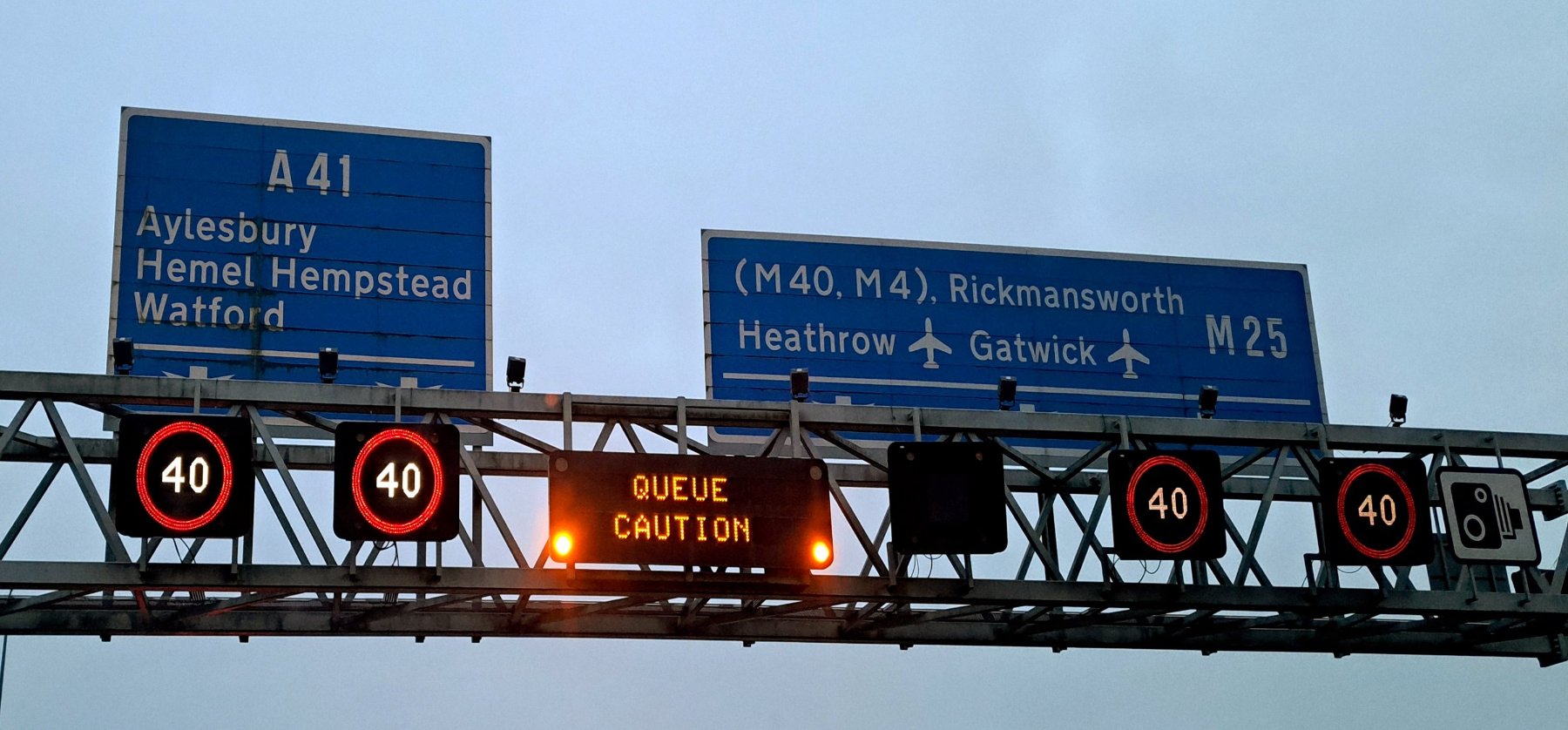Drivers only just realising you can legally ignore this motorway speed limit sign
According to the Express, motorists are suddenly realising that there’s one kind of speed limit sign you can ignore.

Amber speed signs
The speed limit on amber speed signs on the motorway are completely advisory and are not legally enforced.
These signs are usually temporary and are seen on gantries or by the side of the road. They’re most often used around accidents, roadworks or something else that is likely to disrupt the flow of traffic.
Reddit user BevvyTime made this discovery while driving in Kent and had this to say: “On the M2, big crash on the other side with a guy being intubated in an ambulance. Big Amber 50 signs flashing for about two miles beforehand, yet I appeared to be the only person adhering to this?”
They went on to say they had to speed up to 60mph just to avoid being a danger to themselves and others, but hadn’t realised the temporary 50mph speed limit was advisory.
What happens if you don’t stick to the limit?
Despite not being compulsory, you should still stick to the advisory speed limit.
Another Reddit user, Federal-Lemonade, added to the thread saying: “If I recall correctly, from a speed awareness course I did a few years back, they said that amber speed limit signs are advisory, but if you get into an accident and you’re over that limit you’re leaving yourself open to a dangerous driving charge.”
This is in-line with driving course provider PassMeFast’s advice: “Sometimes advisory speed limit signs are used on motorways. These display a number, with amber lights flashing in the corners of the sign. Although not enforceable by law, you should still take note of advisory speed limits. They reflect conditions on the road, and potential hazards that you need to be aware of.”
What’s the difference between the compulsory, temporary, and advisory signs?
- The advisory signs have amber numbers and are usually dot matrix signs, the digital type that use coloured dots to write words or numbers. These are speed recommendations and, while not enforceable, driving well below the recommended speeds can lead to penalties.
- Temporary speed limits have amber numbers inside a red circle. These speed limits are legally enforceable, so be sure to stick to them. These are legally enforceable and trigger a fixed penalty notice for exceeding the displayed speed limit.
- The compulsory speed limit signs are the type you see everywhere, usually a black number on a white background with a red outline.
FAQs
Are advisory speed limits on motorways legally enforceable?
No, advisory speed limits—often displayed on a motorway gantry with flashing amber lights and no red circle—are not legally enforceable. They are meant to guide drivers in poor weather or traffic conditions. However, ignoring them could be considered by authorities as careless driving if by doing so you contribute to an accident.
How are temporary speed limits enforced and what are the penalties?
Temporary speed limits are enforced using speed cameras, especially on smart motorways and in roadwork zones. If you're caught exceeding the limit, you may face a Fixed Penalty Notice (FPN). This could incur a £100 fine and 3 penalty points on your license. However, this penalty could be more severe depending on your speed.
Do police allow any speed tolerance above the limit?
Most forces tend to follow the 10% + 2 mph tolerance rule (e.g. 35 mph in a 30 zone). However, this is not a legal entitlement and drivers can be fined even if slightly over the speed limit. Speed tolerance will likely vary by police force and circumstances.
What is Active Traffic Management (ATM) and how does it affect speed limits?
ATM is a system used on smart motorways to manage the flow of traffic. It uses variable speed limit gantries, lane closure signs (red X), and MIDAS sensors to control congestion.